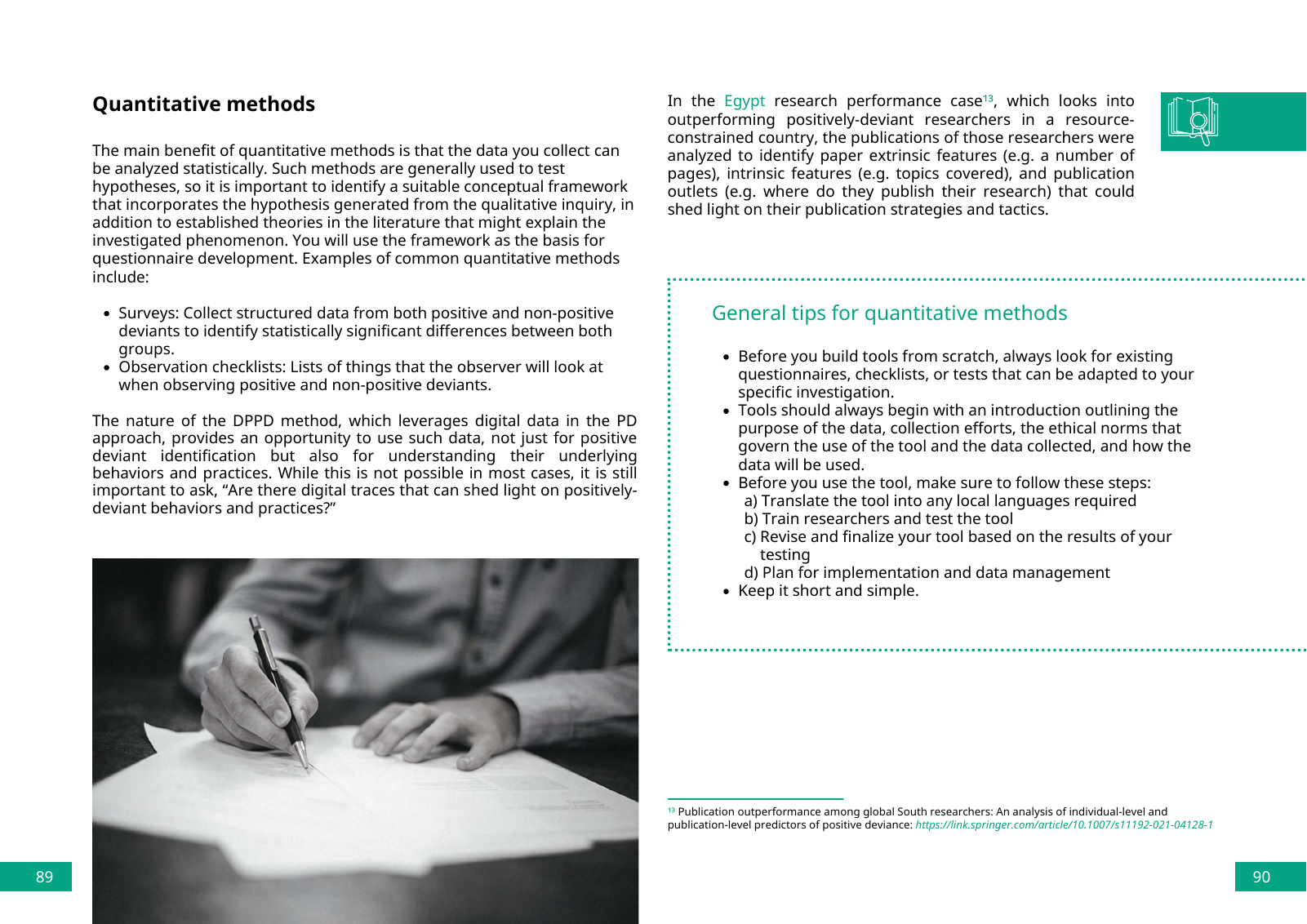Publication outperformance among global South researchers An analysis of individual level and publication level predictors of positive deviance https link springer com article 10 1007 s11192 021 04128 1 Surveys Collect structured data from both positive and non positive deviants to identify statistically significant differences between both groups Observation checklists Lists of things that the observer will look at when observing positive and non positive deviants The main benefit of quantitative methods is that the data you collect can be analyzed statistically Such methods are generally used to test hypotheses so it is important to identify a suitable conceptual framework that incorporates the hypothesis generated from the qualitative inquiry in addition to established theories in the literature that might explain the investigated phenomenon You will use the framework as the basis for questionnaire development Examples of common quantitative methods include Quantitative methods The nature of the DPPD method which leverages digital data in the PD approach provides an opportunity to use such data not just for positive deviant identification but also for understanding their underlying behaviors and practices While this is not possible in most cases it is still important to ask Are there digital traces that can shed light on positively deviant behaviors and practices In the Egypt research performance case which looks into outperforming positively deviant researchers in a resource constrained country the publications of those researchers were analyzed to identify paper extrinsic features e g a number of pages intrinsic features e g topics covered and publication outlets e g where do they publish their research that could shed light on their publication strategies and tactics Before you build tools from scratch always look for existing questionnaires checklists or tests that can be adapted to your specific investigation Tools should always begin with an introduction outlining the purpose of the data collection efforts the ethical norms that govern the use of the tool and the data collected and how the data will be used Before you use the tool make sure to follow these steps Keep it short and simple a Translate the tool into any local languages required b Train researchers and test the tool c Revise and finalize your tool based on the results of your testing d Plan for implementation and data management General tips for quantitative methods 89 90

Hinweis: Dies ist eine maschinenlesbare No-Flash Ansicht.
Klicken Sie hier um zur Online-Version zu gelangen.
Klicken Sie hier um zur Online-Version zu gelangen.